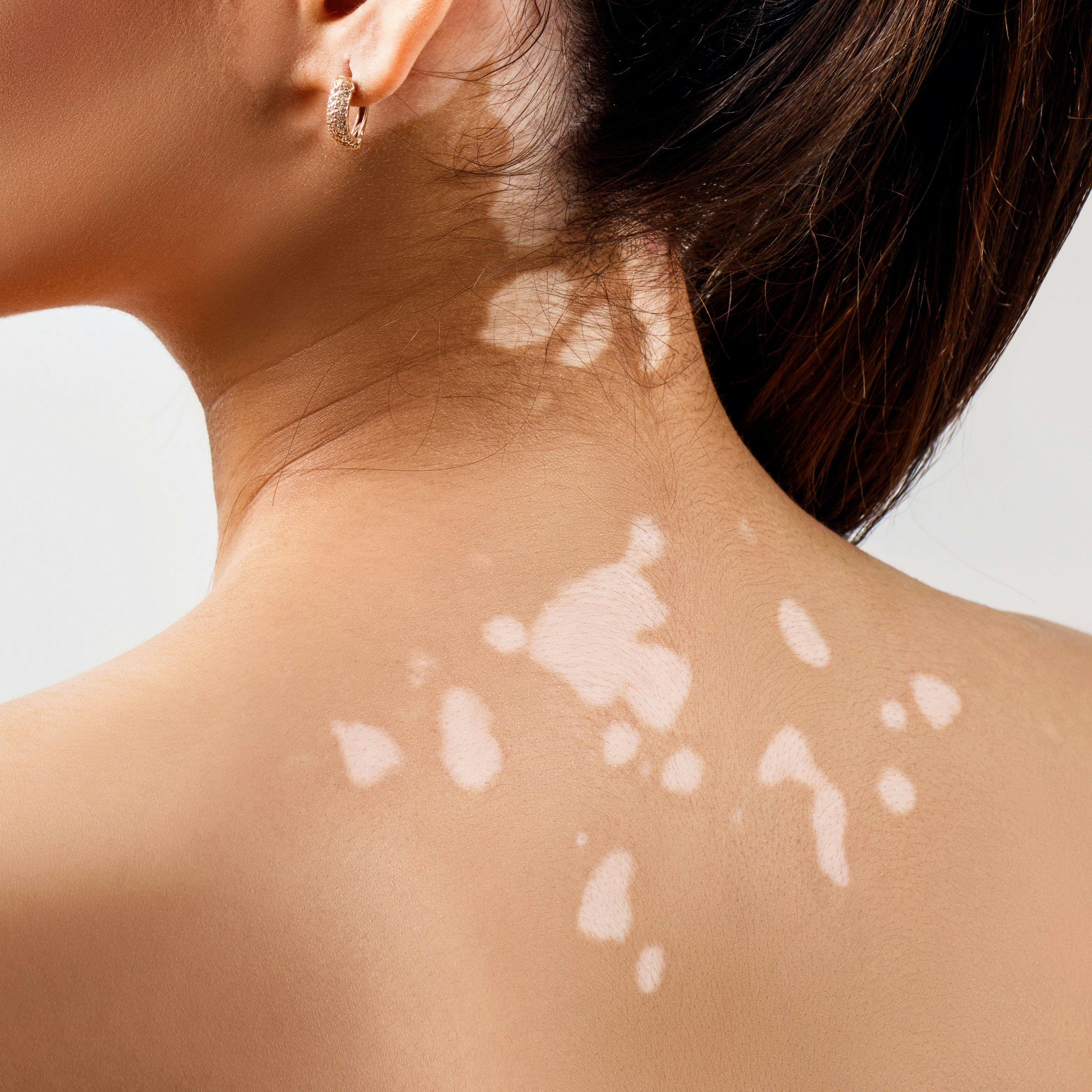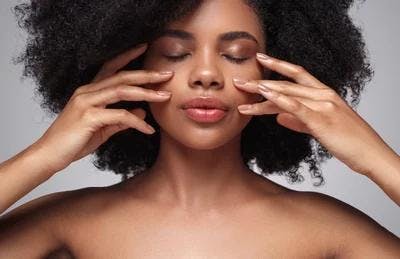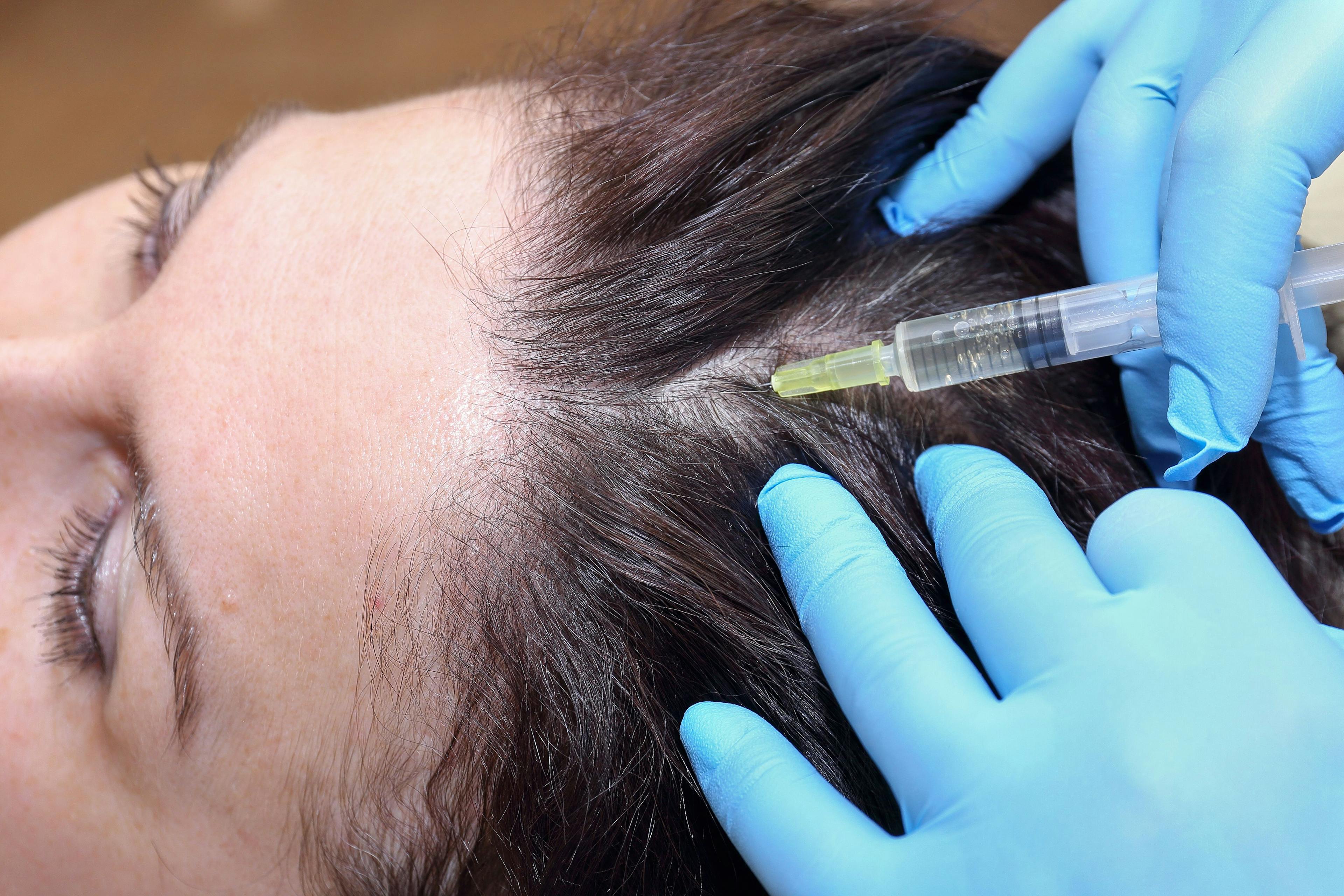- Acne
- Actinic Keratosis
- Aesthetics
- Alopecia
- Atopic Dermatitis
- Buy-and-Bill
- COVID-19
- Case-Based Roundtable
- Chronic Hand Eczema
- Chronic Spontaneous Urticaria
- Drug Watch
- Eczema
- General Dermatology
- Hidradenitis Suppurativa
- Melasma
- NP and PA
- Pediatric Dermatology
- Pigmentary Disorders
- Practice Management
- Precision Medicine and Biologics
- Prurigo Nodularis
- Psoriasis
- Psoriatic Arthritis
- Rare Disease
- Rosacea
- Skin Cancer
- Vitiligo
- Wound Care
Publication
Article
Dermatology Times
Aesthetics in Skin of Color: Pearls and Precautions
Author(s):
Aging in skin of color is less about wrinkling and more about fat loss.
Treating the medical dermatologic needs of people of color requires expertise in recognizing variations that can affect outcomes, from diagnosis to management. Best-practice fundamentals still apply, but optimizing cosmetic procedures on darker phototypes poses challenges, according to Pearl E. Grimes, MD, FAAD, director of The Grimes Center for Medical and Aesthetic Dermatology and The Vitiligo and Pigmentation Institute of Southern California, both in Los Angeles, and a member of the Dermatology Times® editorial advisory board
“If you look at treating acne or atopic dermatitis in skin of color, there are similarities in the protocols among all racial or ethnic groups,” said Grimes, who served as moderator for a session on aesthetics in skin of color at the 18th Annual Skin of Color Society Scientific Symposium.1 “But aesthetics is a different beast. We dermatologists need to know the differences, and we have to know our boundaries.”
That starts with basics such as photoprotection. “When you look at differences between dark skin vs lighter skin, dark skin has an SPF of 13, whereas if you look at lighter skin, it’s an SPF of 3.4,” Grimes said. “This really is a major factor in some of the morphologic, physiologic differ- ences we see.”
She cited research conducted by Procter & Gamble on dermatomyositis, in which investigators compared aesthetic procedures performed on African American women vs Caucasian women.2 Her presentation highlighted examples of the 2 groups’ marked differences, including signs of aging. Comparing images of two 80 year-old-women, one with dark skin and the other with light skin, Grimes pointed out that the latter’s skin showed fine, coarse lines whereas the former’s skin showed more volume loss.
Summarizing the advantages of darker phototypes, Grimes noted that individuals in this population have enhanced protection from the sun and decreased frequency of skin cancer. However, they also face challenges compared with lighter-skinned individuals, she said. For example, the presence of more melanin affects the body’s ability to synthesize vitamin D. People of color also grapple with concerns such as keloids and pigmentary disorders.
Grimes also referenced findings of a global study of approximately 4000 women, which revealed that more than 30% of Caucasian women reported the most signs of aging from 40 to 49 years, whereas Black women did not report those signs until they were past age 60.3
“These are data that I have been following for the past 10 years,” Grimes said, adding that she has seen a steady increase in procedures in skin of color: “When I started following these data, skin color was at 19%; the latest data have it now at 32%.”4
She predicted the numbers will continue to rise because of visibility, social media, and the population at large being increasingly interested in aesthetics.
Following her presentation, Grimes explored key issues regarding aesthetics in skin of color with panelists Cheryl Burgess, MD, FAAD, founder, medical director, and president of the Center for Dermatology and Dermatologic Surgery in Washington, DC, and Janiene Luke, MD, FAAD, associate professor and residency program director in the Department of Dermatology at Loma Linda University in California.
Opening the dialogue, Grimes asked, “If we look at where we stand today in advancements in the state of cosmetic surgery, do we think we’ve done a good job? Are we happy? Do we need to do more?”
In Burgess’ view, the answer to the last question is a definitive yes. “I conduct a lot of research. What I’ve found is that we can fill and tighten many times over,” she said. “However, the tablecloth is only going to look like the table underneath. We need more research involving bone reconstruction and remodeling.”
Luke agreed, adding that, from her standpoint, aesthetics for women of color is “in a good place, and the future looks very bright in the segment.” However, there is always room for improvement, she said: “As we move forward, I think it’s important to be included in the studies and also in the research and development of devices that we can use safely in patients with skin of color.”
Grimes’ second talking point for the panel referred to her slide on the morphologic, physiologic differences of how darker skin ages. “I tell my patients fillers are like a facelift in a syringe for darker skin types. What are your favorite go-to tools for antiaging?” she asked.
“I like all of the tools for antiaging,” Burgess said. “When we look at aging in skin of color, there’s more sinking and sagging vs wrinkling. That’s a lot of fat loss, and fillers work very well in enhancing the volume loss. But at the same time, you can only put so much filler in the skin. We have to incorporate tightening of the skin. It’s even more practical to start younger in tightening the skin and encouraging skin tightening procedures for the younger population who are already reading about noninvasive injectables for antiaging.”
Luke recommended taking more of a pan-facial approach to rejuvenation. In her practice, “a younger patient population of women are coming in looking for laser procedures, microneedling, neuromodulators, and non-ablative resurfacing,” she said. “Whatever the patient is coming in for, I try to take a well-rounded treatment approach.”
When asked to compare different fillers and how she decides which to use, Burgess noted that biostimulating products do well because skin of color has more reactive collagen. “In some of the studies I’ve conducted, skin of color may require less filler sessions or need 2 treatments as opposed to 3 for [Fitzpatrick] skin types 1, 2 and 3,” she added.
Grimes presented a list of cosmetic proce- dures she classified as “go slow and no,” discussing those that perform well on skin of color vs those that require caution or avoidance. The “go” list included microdermabrasion, chemical peels (staying in the superficial range), microneedling with platelet-rich plasma, laser hair removal, and fat reduction.
She noted some cautions about lasers. “Lasers can be tricky,” Grimes advised. “For example, I would avoid ablative lasers and the intense pulsed light devices on darker skin types [because of pigmentary/discoloration concerns]. Overall, it’s best to avoid anything done to excess.
“It’s always about efficacy, outcomes, and minimizing the list of complications,” Grimes continued. “Sometimes we must say absolutely no to requested procedures. You cannot be defined by what you see on social media; most of it is far from real. However, we [dermatologists] do have the capacity to change the lives of people of color.”
MANAGE EXPECTATIONS
Grimes next addressed the topic of the rise in younger people desiring treatment, and social media’s influence, such as creating the desire to improve every little imperfection. “How do we establish boundaries?” she asked. “Are these just cases of body dysmorphic [disorder]?”
Burgess noted social media’s “faddish, very short-term” topics. Initially, she said, many requests were based on social media influencers; now they are driven by TikTok sensations and other trends, and she’s not afraid to tell patients no.
“If it’s not indicated, I wouldn’t do it,” Burgess said. “Sometimes it’s facial shaping in younger people, but in older people, it may be volumizing. Dermatologists have to use logic. Physicians have to use common sense because there are a lot of people out there who are never satisfied.”
“Don’t let the patient force your hand—that’s the key,” Burgess said. “Patients will come in telling you what they want. You have to be astute and knowledgeable that the procedure isn’t for them.”
At her university, Luke trains residents to help patients embrace the goal of looking like the best version of themselves. “I’m very frank with people about what I can do with these procedures,” Luke said. “If I feel like their expectations are unrealistic, I’ll tell them that the devices in my hand may not give them the results [they] want. And sometimes you do have to say no. I won’t go past my level of comfort.”
Both panelists said they are comfortable sending patients away, and Grimes agreed. The trio talked a bit about the industry’s underbelly: Patients eventually can find someone to say yes, but poor results can range from an unfortunate but temporary overfilled lip to a tragic outcome. One such case is the death Donda West, the mother of superstar Ye (commonly known by his birth name, Kanye West); in 2007, she died following cosmetic surgery that other physicians would not do. “If your gut tells you no, don’t do it,” Grimes said.
Turning the discussion to favorite peels, Burgess said she works with a range of products but frequently uses Jessner’s for dyschromia. Luke said she also has found that Jessner’s and a SkinMedica peel with a retinol solution produce positive outcomes for skin of color.
“We try to walk through all the different procedures, so [patients] know what to expect and then are happy with their results,” Luke said. She added that it’s important to build a strong rapport with patients so that they will seek help for any complications.
Disclosures:
Burgess serves as a clinical investigator for Allergan, ISDIN, MerzAesthetics, and Revance.
Grimes reported no relevant disclosures.
Luke reported no relevant disclosures.
References:
1. Grimes PE, Burgess C, Luke J. Aesthetics in skin of color. Presented at: 18th Annual Skin of Color Society Scientific Symposium; March 24, 2022; Boston, Massachusetts.
2. Swilley K, Monk D. How Procter & Gamble Co. scientists cracked the code on skin aging. WCPO.com. July 5, 2018. Updated July 9, 2018. Accessed April 13, 2022. https://www.wcpo.com/money/local-business-news/how-procter-gamble-co-scientists-cracked-the-code-on-skin-aging
3. Alexis AF, Obioha JO. Ethnicity and aging skin. J Drugs Dermatol. 2017;16(6):S77-S80.
4. Quiñonez RL, Agbai ON, Burgess CM, Taylor SC. An update on cosmetic procedures in people of color. part 1: scientific background, assessment, preprocedure preparation. J Am Acad Dermatol. 2022;86(4):715-725. doi:10.1016/j.jaad.2021.07.081

Newsletter
Like what you’re reading? Subscribe to Dermatology Times for weekly updates on therapies, innovations, and real-world practice tips.





























